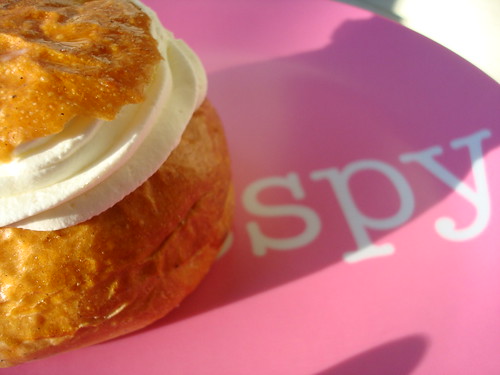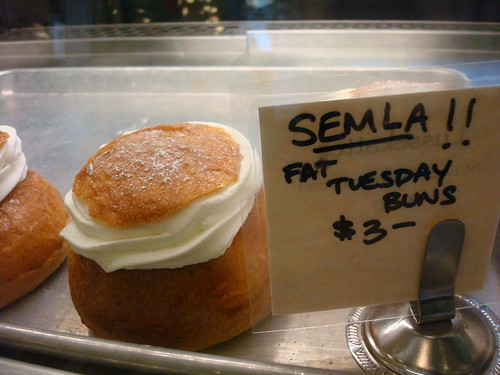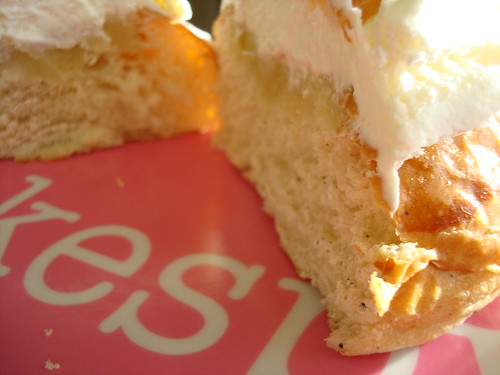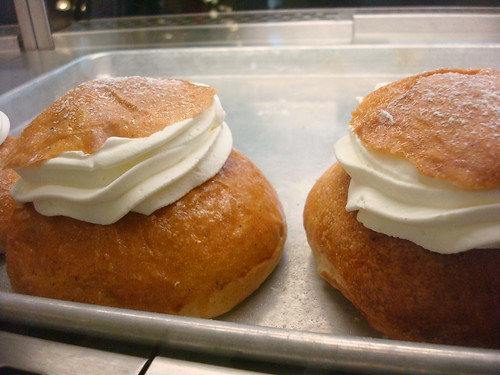
Semla. There are so many things to say about the sweet treat (which we recently scored at local Swedish bakery Svedala), but first let's just get acquainted, shall we?
First, what is it? Delicious, that's what. While there are different variations, what it comes down to is a cardomom-spiced yeast-raised wheat bun filled with almond paste and whipped cream.

Where does it come from? Semla is a pastry which has roots in Finland, Norway, Denmark and Estonia, but is probably most closely linked to Sweden.
When is it available? Semla is most commonly associated with Shrove Tuesday (we call it "Fat Tuesday") as a fatty and decadent kickoff to that season of deprivation perhaps better known as Lent; however, according to Sweden.se ("the official gateway to Sweden"), the delicious treat "has arguably outgrown its religious symbolism", noting that
The plump, cream-filled buns traditionally eaten on Tuesdays begin appearing in shops as early as January 1. Fat Tuesday would be more aptly named fat January, February and March.

How is it eaten? Apparently, the traditional way to eat Semla is served in a bowl of hot milk; however, as we were assured by the owner of Svedala Bakery in Seattle, eating it on its own (at room temperature) is really just fine, and as we discovered, even finer with coffee or hot tea. Of course, as we also learned from Sweden.se,
in Finland, the bun is sometimes filled with strawberry jam instead of almond paste, and bakeries in Finland usually offer both versions. (Many bakeries distinguish between the two by decorating the traditional bun with almonds on top, whereas the jam-filled version has powdered sugar on top).

Do you have any Semla trivia to share? But of course! Via Wikipedia and Sweden.se:
- Sweet Surrender: King Adolf Frederick of Sweden died of digestion problems on February 12, 1771 after consuming a meal consisting of lobster, caviar, sauerkraut, smoked herring and champagne, which was topped off by 14 servings of semla, with bowls of hot milk. Semla was the king's favorite dessert. (CakeSpy Note: One should hope so!)
- Gimme some sugar: Semla was the sweet chosen to represent Finland in the Café Europe initiative of the Austrian presidency of the European Union, on Europe Day 2006.
- Swede Fancy: Each Swede eats five semlor per year on average.
